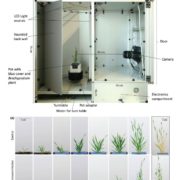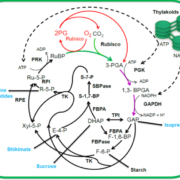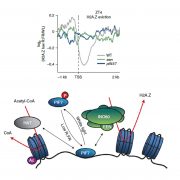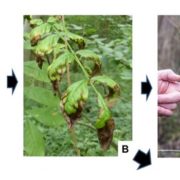Genome downsizing, physiological novelty, and the global dominance of flowering plants
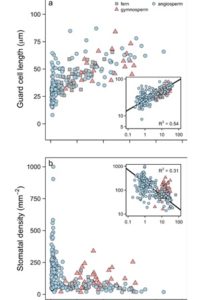 PLOS Biol. Guard cell size is, in general, inversely related to stomatal density. It is advantageous for plants to maximize their photosynthetic capabilities by generating higher rates of gas exchange, thereby incorporating more CO2 to help drive this pathway. However, the number of cells that can occupy a given space is restricted, as defined by cellular allometry. These constraints include genome size, nuclear volume, and cell size. Simonin and Roddy examine the evolutionary relationship between genome size, cell size, stomatal density, and primary productivity across all major clades of terrestrial plants. Smaller genome sizes were attributed to smaller and more densely packed stomata whereas species with larger genomes had larger stomata that were further apart. This variation is genome size to stomatal density was assessed in more detail by examining their associated stomatal conductance rates. Shrinking genomes seen across all species was found to also bring about more efficient/higher rates of stomatal conductance along with faster rates of growth. Additionally, as genome downsizing only allows for smaller cell size, species with this trait can exhibit greater plasticity in final cell size which may facilitate the habitation of a wider range of environmental conditions. This paper adds insight into how angiosperms have achieved rapid ecological domination, outcompeting ferns and gymnosperms. (Summary by Alecia Biel) PLOS Biol. 10.1371/journal.pbio.2003706.
PLOS Biol. Guard cell size is, in general, inversely related to stomatal density. It is advantageous for plants to maximize their photosynthetic capabilities by generating higher rates of gas exchange, thereby incorporating more CO2 to help drive this pathway. However, the number of cells that can occupy a given space is restricted, as defined by cellular allometry. These constraints include genome size, nuclear volume, and cell size. Simonin and Roddy examine the evolutionary relationship between genome size, cell size, stomatal density, and primary productivity across all major clades of terrestrial plants. Smaller genome sizes were attributed to smaller and more densely packed stomata whereas species with larger genomes had larger stomata that were further apart. This variation is genome size to stomatal density was assessed in more detail by examining their associated stomatal conductance rates. Shrinking genomes seen across all species was found to also bring about more efficient/higher rates of stomatal conductance along with faster rates of growth. Additionally, as genome downsizing only allows for smaller cell size, species with this trait can exhibit greater plasticity in final cell size which may facilitate the habitation of a wider range of environmental conditions. This paper adds insight into how angiosperms have achieved rapid ecological domination, outcompeting ferns and gymnosperms. (Summary by Alecia Biel) PLOS Biol. 10.1371/journal.pbio.2003706.


